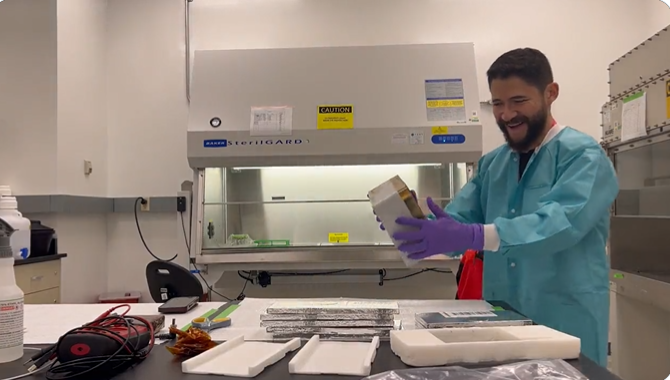Artemis program, named after the sister of the Greek god Apollo, wasn’t just a return to the moon, it’s a series of missions that seek, among other things, to bring the first woman and first person of color to step on the surface of the moon. One of the experiments was to travel to the moon with the cooperation of a group of students, who helped manufacture various plastic parts that travel to space.
The Orion capsule was launched aboard the most powerful rocket ever built by man. SLS (Space Launch System). At takeoff, the rocket weighed the equivalent of eight jumbo jets and was powerful enough to lift the weight of twelve full-grown elephants.
The missile was launched on November 16, 2022.Kennedy Space Center in Florida, the same place where the Saturn V rocket for the Apollo missions departed.
At just under 100 meters high, the towering SLS is so powerful with 8.8 million pounds of thrust that it will allow not only trips to the Moon, but also to Mars and beyond.
Artemis I traveled more than 450,000 km and first orbited Earth, deploying its solar panels and activating the primary propulsion system that gave it the thrust needed to travel around the Moon.
It took about four days to reach the moon, and the capsule entered an orbit where it passed within 100 kilometers of the lunar surface.
Guatemalan DSRG Project
Some scientific experiments have traveled to the Moon, incl Deep Space Radiogenomics (DSRG), led by Guatemalan scientist Luis Zea. This is a biological experiment in which yeast cells that were exposed to cosmic radiation during the flight will be taken and its effect on their DNA will be studied. This project will bring benefits to human exploration of space and to people on Earth.
As part of the experiment setup, parts that were manufactured at the Universidad del Valle de Guatemala (UVG) by a team of two professors and five students from the Department of Mechanical Engineering were used. The DSRG project started in 2019 and thanks to Luis Zea’s advocacy, UVG put together a team of mechanical engineering students and teachers who worked on manufacturing the PSU’s plastic parts for the first two months of 2020.
Now that the project is backEngineer Luis Zea was excited to receive the first samples from the project. Videos have been shared on NASA’s social networks in which the Guatemalan expert is seen unloading one of the capsules.
Although the data obtained during the investigation has not yet been disclosed, the first images of these projects built by the Guatemalans have already been shown.
Tweets by NASASpaceSciDr. Zea’s enthusiastic feedback follows initial observations that the experiment worked as it was supposed to, with remarkable healthy yeast growth too! Final results from # Artemis Studies will come later, eleven scientists processed the samples in the laboratory 🔬 pic.twitter.com/jeGKKHhvnp
– NASA Space Sciences (NASASpaceSci) January 19, 2023





